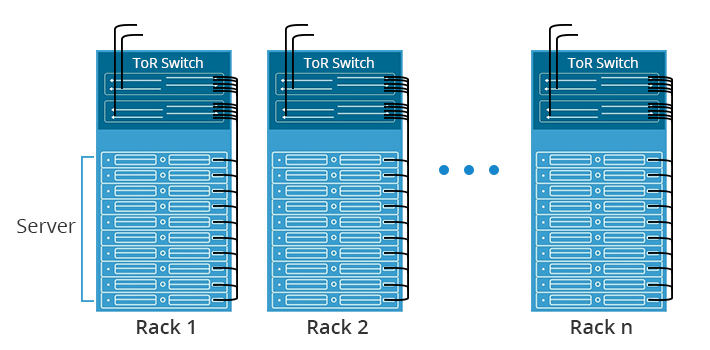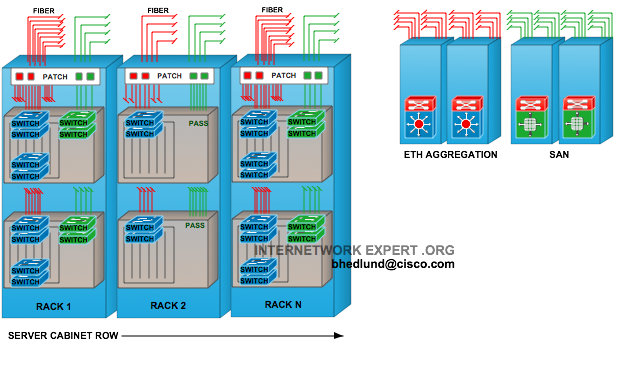

However, what is top-of-rack switch and how to buy it when needing? Let’s find out the answers together with the illustration below. You may heard about it that top-of-rack switch is very popular to support power required for large installations and the ToR design is very convenient for servers to connect. In a greenfield data center deployment where existing EoR cable plant doesn't exist, the benefits of a ToR architecture supersede the nominal increase in hardware capital expenditures.When it comes to server connecting in data center, network switch is a vital part.

The re-cabling cost, in addition to increased capital expense due to the additional hardware requirements of a ToR architecture, can sway data center operators to stick with an EoR architecture. If EOR cable plant is already in use in a data center, it is often easier and more cost effective to reuse it when switch hardware is upgraded, as opposed to ripping and replacing the horizontal cable plant to convert it to a ToR cabling design. Often, there will be multiple EoR switches in a data center, one per row or sometimes one to connect a certain number of racks. EoR switching differs from ToR switching because EoR design calls for each server in a rack to be directly connected to a common aggregation switch, without connecting to individual switches within the rack.ĮoR designs almost always require a much larger horizontal cable plant. ToR and end-of-row (EoR) switching are both popular data center architecture options that require a large number of servers to connect.
#TOR SWITCH VS CORE SWITCH OFFLINE#
Finally, if the ToR architecture calls for a single in-rack switch to be deployed per rack, an entire rack will be taken offline if that switch fails. ToR switches also may end up being underutilized, which can result in unnecessary power usage and increased cooling with no direct benefit to performance. The distributed architecture of a ToR design requires the need for more physical switches. In terms of ToR challenges, capital and maintenance costs might be higher. A pre-assembled rack with all the necessary cabling and switches can be quickly connected and deployed on site. In other instances, ToR architecture boosts modular deployment. Other benefits of ToR include the ability to combine one network switch for two or three racks, if they are low-density deployed racks. A ToR design can often be easily upgraded to 10 Gigabit Ethernet (GbE), 40 GbE or 100 GbE, without incurring many costs or necessitating a change in cabling. Cable length and the amount of cabling needed also are reduced. Cabling complexity is reduced because all of the servers connect to the switch on the same rack and fewer connections need to run outside the rack to reach the aggregation switch. ToR offers many benefits, along with some drawbacks. Connections within the rack can be any combination of copper, fiber or direct access cabling.Īmong other capabilities, ToR switches handle operations, including Layer 2 and Layer 3 frame and packet forwarding, data center bridging and the transport of Fibre Channel over Ethernet for the racks of servers connected to them. Each in-rack switch, in turn, is connected to the aggregation switch block using fiber. In high-density data center deployments, switches are placed in every rack, and in most cases, connected to a computing device such as a bare-metal server used by only one tenant or blade server chassis. To better enable access to the horizontal fiber optic cabling that connects in-rack switches to aggregation switches, they are usually positioned near the top of the rack, however. Top-of-rack (ToR) switches are most often placed at the top of the rack but can be placed anywhere in the rack. The in-rack network switch, in turn, is connected to aggregation switches, most often via fiber optic cable. Top of rack architecture generally places a network fiber switch in every rack to connect easily with every other device in the rack. Top-of-rack switching is a data center architecture design in which computing equipment like servers, appliances and other switches located within the same or adjacent rack are connected to an in-rack network switch.


 0 kommentar(er)
0 kommentar(er)
